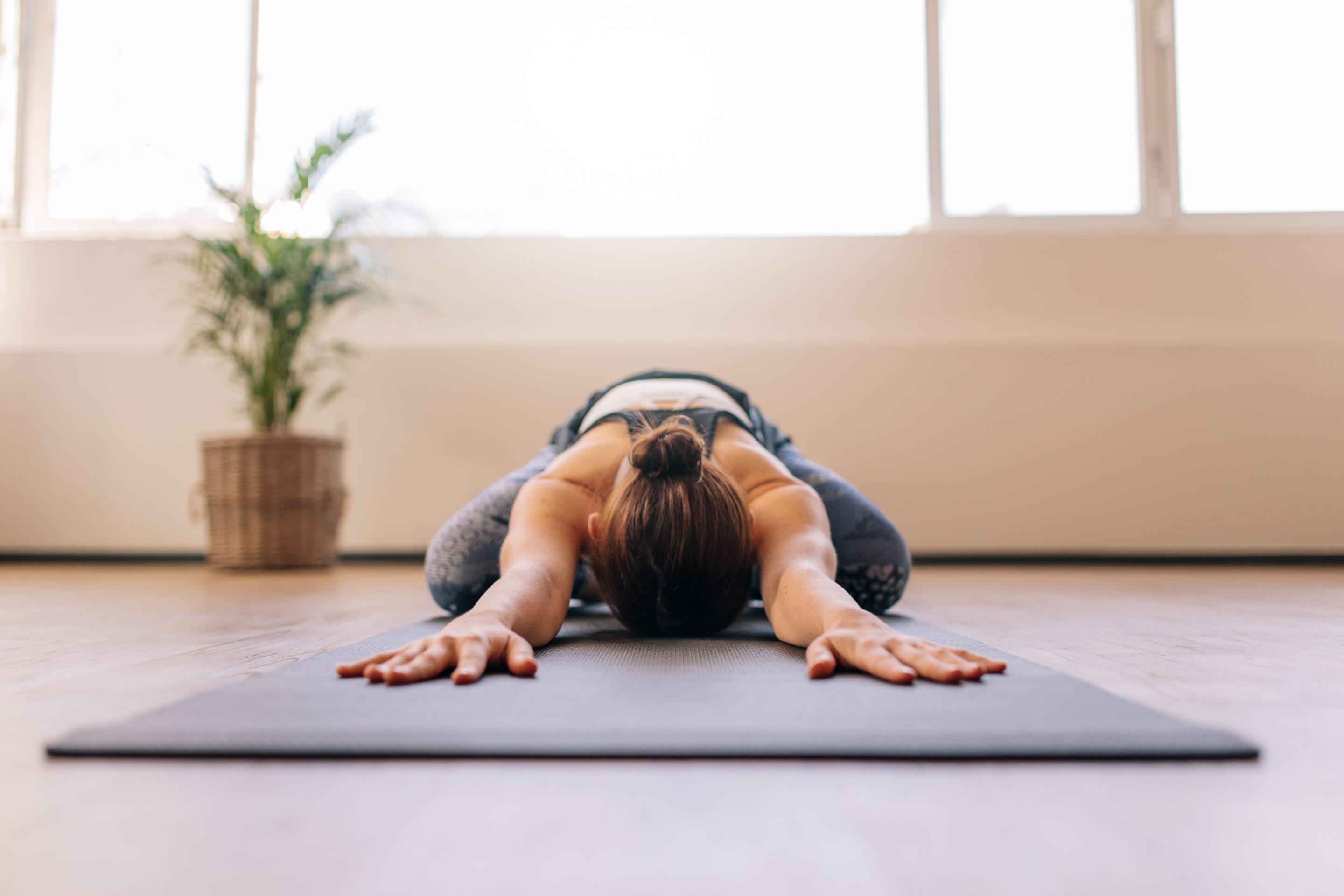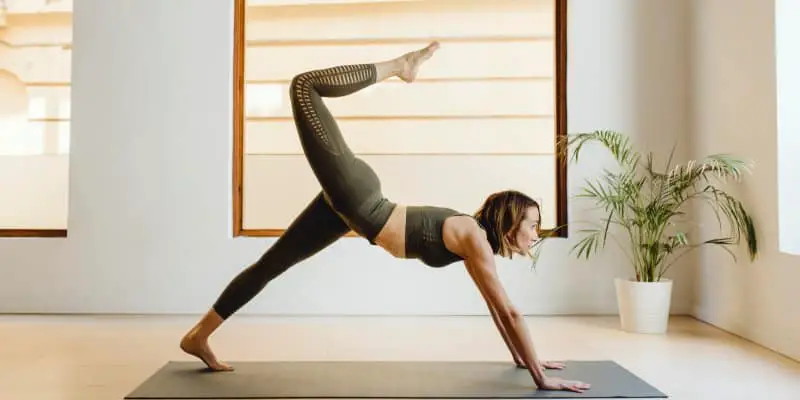Vinyasa has taught me so much more than I ever expected. From alignment and strength, to balance and focus; the progress I made on the mat motivated me to continue. But everything changed when I realized Vinyasa had started having a profound impact on my life off the mat.
I hope this post can unite you with this powerful tool-Vinyasa yoga that helped me to fall in love with life.
What is Vinyasa Yoga?
Vinyasa Yoga is a modern style of yoga categorized by asanas (poses) which are seamlessly and dynamically linked together by way of the breath. This style of yoga can often feel more like a ‘flow’ or a dance in comparison to more static styles of yoga practice, such as Hatha or Yin (where poses are held for longer lengths of time and without transitions between them).
The transitions between each pose are just as much a part of the practice as the asanas themselves. These rhythmic transitions are what help to make this practice feel like a moving meditation, challenging us to cultivate a moment-by-moment awareness of our breath and body, whilst inviting a sense of aliveness and embodiment that more traditional forms of yoga may stifle.

Each class you attend will most likely be different from another, as Vinyasa calls for no set sequence of postures. The uniqueness and variety offered by this style of yoga will continue to pique your interest and keep you feeling challenged, both physically and mentally, in a way that more traditional forms of yoga may not.
Whilst practicing Vinyasa, the aim is to utilize Ujjayi breathing: a calming breathing technique intended to bring you closer to a meditative state and support you to synchronize your breath with your movements. Ujjayi breath is sometimes described as ‘ocean breath’. This is because when practicing Ujjayi properly, your inhales and exhales should sound like the ebbs and flows of the ocean waves on the shore. You can learn more about Ujjayi breathing and practice this powerful breathing tool here.
Essentially, the goal of this practice is to link movement and breath together so intricately and seamlessly that you are able to enter into a ‘flow state’, feeling lucidly in tune with your body and the present moment.
So, What about the Philosophy of It All?
Well, Vinyasa Yoga reflects us and prepares us for the temporary nature of life. We find ourselves in a pose, and it may feel comfortable or it may feel challenging – much like the situations we find ourselves in throughout our lives.
We learn to appreciate the comfortableness and get ourselves through the challenges on the mat, which translates to finding gratitude as well as resilience in our lives off of the mat. We come to understand that nothing good or bad lasts forever, finding acceptance for the sacredness of each moment we live.
The History of Vinyasa Yoga

Vinyasa can be traced back to around 8000 BC, with references to this practice said to have been found in the Vedas (sacred yogic texts). Whilst this is somewhat debated by yogic historians, what we know is most likely, is that Vinyasa was born out of the Ashtanga Yoga tradition, birthed in 1888 by T Krishnamacharya. Often thought of as the grandfather of modern yoga, Krishnamacharya is considered a pioneer of the way we practice around the world today.
Krishnamacharya taught Ashtanga Yoga to Patthabi Jois, whose students went on to popularise Ashtanga Yoga in the western world. Many other styles of yoga were developed as a result of Krishnamacharya’s teachings; from Iyenger yoga to TKV Desikachar yoga and of course, Vinyasa. This is often why most Vinyasa classes will commence with Sun Salutations (in the same way that Ashtanga Yoga does), before moving on to a unique, creative sequence for the remainder of the class.
“Vinyasa in its original meaning from the early Tantras is understood as the ‘sequence of consciousness’ or how life unfolds from the creative pulse of life.” – Shiva Rea.
The aim of a Vinyasa class is continuous deep breathing and body awareness, whilst finding fluid, continuous movement through the postures.
The Benefits of Vinyasa Yoga
- Builds strength and endurance
- Improves flexibility and balance
- Variety in posture sequence helps to avoid repetitive motion injuries
- Increases cardiovascular activity
- Reduces stress and anxiety. A recent study found a significant improvement in sleep and a reduction in stress and anxiety across participants, advocating for Vinyasa Yoga as a supportive practice for mental health and overall wellbeing.
Vinyasa Yoga vs. Classic Yoga
The main difference you will find between Vinyasa Yoga and more traditional Hatha yoga is the transitions that create a more ‘flowing’ feel to the class. Additionally, the pacing of Vinyasa classes, as well as the time spent in each posture, is very different from a more traditional Hatha class.
Vinyasa Yoga tends to require greater breath control than traditional Hatha, due to spending only usually one or two breaths in each posture, as opposed to up to 10 breaths per pose.
This faster pace between postures produced one clear difference for me in my first Vinyasa class – sweat. If you’re used to practicing Hatha Yoga, one thing you should prepare for when trying a Vinyasa class is the increase you will experience in your cardiovascular activity. (Errr, can someone pass a towel)?
But trust me, the sweat all becomes worth it for that sacred moment at the end of class when you find yourself in Savasana; relaxed, grateful, and fully present. Just don’t forget your water!
5 Vinyasa Yoga Safety Tips for Beginners
1. Listen to your body
Ensure to go at your own pace, with your own breath – this is the most important part of the practice. Getting your breathing right takes priority over the way your body looks, so if you need to take breaks to catch your breath, then do. If a posture doesn’t feel right for your body or feels painful, trust yourself and don’t go there. Remember that you know your body better than any teacher can.
2. Focus on finding stability
When you are feeling confident in your breathing, try to begin focussing on feeling stable and strong in each posture and transition and take breaks in the child’s pose when necessary.

3. Have fun!
Try not to take yourself too seriously. Finding a smile and having a giggle at yourself during your stumbles and falls will help you progress a lot quicker than getting frustrated at your body’s abilities.
4. Modify where necessary
Remember, your body is unique. Not every pose in a class will be the right fit for everybody, and that’s okay. Using props and feeling confident to modify postures to better suit your body and your ability will ensure your safety by not pushing and twisting yourself into poses that you aren’t ready for, or that simply aren’t a fit for you anatomically.
5. Remind yourself it’s not a competition
Don’t compare your practice to anyone else’s. Focus on yourself and your journey, and be patient with yourself.
FAQ’s
Is Vinyasa Yoga Suitable for Beginners?
Whilst you can attend a Vinyasa class as a beginner, it may be helpful to get a little experience in a slower-paced style of yoga beforehand. This will help to familiarise yourself with the postures, before attempting to sequence them together with the breath.
However, if you’re feeling open-minded and ready to jump right in, then I recommend you attend a Vinyasa class and inform the teacher before starting that you are a beginner. Your teacher will support you through the class, offer you modifications and encourage you to take breaks when you need to. It may also be useful to look for a beginner-specific Vinyasa Yoga class.
What Should I Wear to a Vinyasa Yoga Class?
I recommend wearing something you feel comfortable in that allows for free movement; leggings, shorts, tank tops, sports bras, and unitards are all great choices!
What Can I Expect from My first Vinyasa Yoga Class?
You can expect your first Vinyasa class to be fun, challenging, and rewarding. You will most likely start with a warm-up (often classes start with a sun salutation sequence ).
You might then move on to standing and balancing postures, almost dancing your way through, with each posture linked by the breath. Your teacher will then lead you into a cool down and eventually to rest in Savasana (corpse pose), where you have time to rest, reflect and integrate your practice.
Can You Do Vinyasa Yoga at Home?
Absolutely! Whilst I love the buzz of an in-person class, home practice is also a great option. There are plenty of ways to practice at home, from live zoom classes to your preferred teacher’s online subscription service, to free yoga on YouTube!
How to Find a Vinyasa Yoga Class near You:
Start a google search for ‘Vinyasa Yoga class’ along with the location you’d like to practice in. I recommend checking out your local studio’s reviews, student testimonials, and the teacher’s background to see if it feels like the right fit for you.
Conclusion
We discussed so many things about Vinyasa Yoga. If you have any questions or want to share the ways Vinyasa Yoga has helped you, please leave a comment below. I’d love to hear from you!
